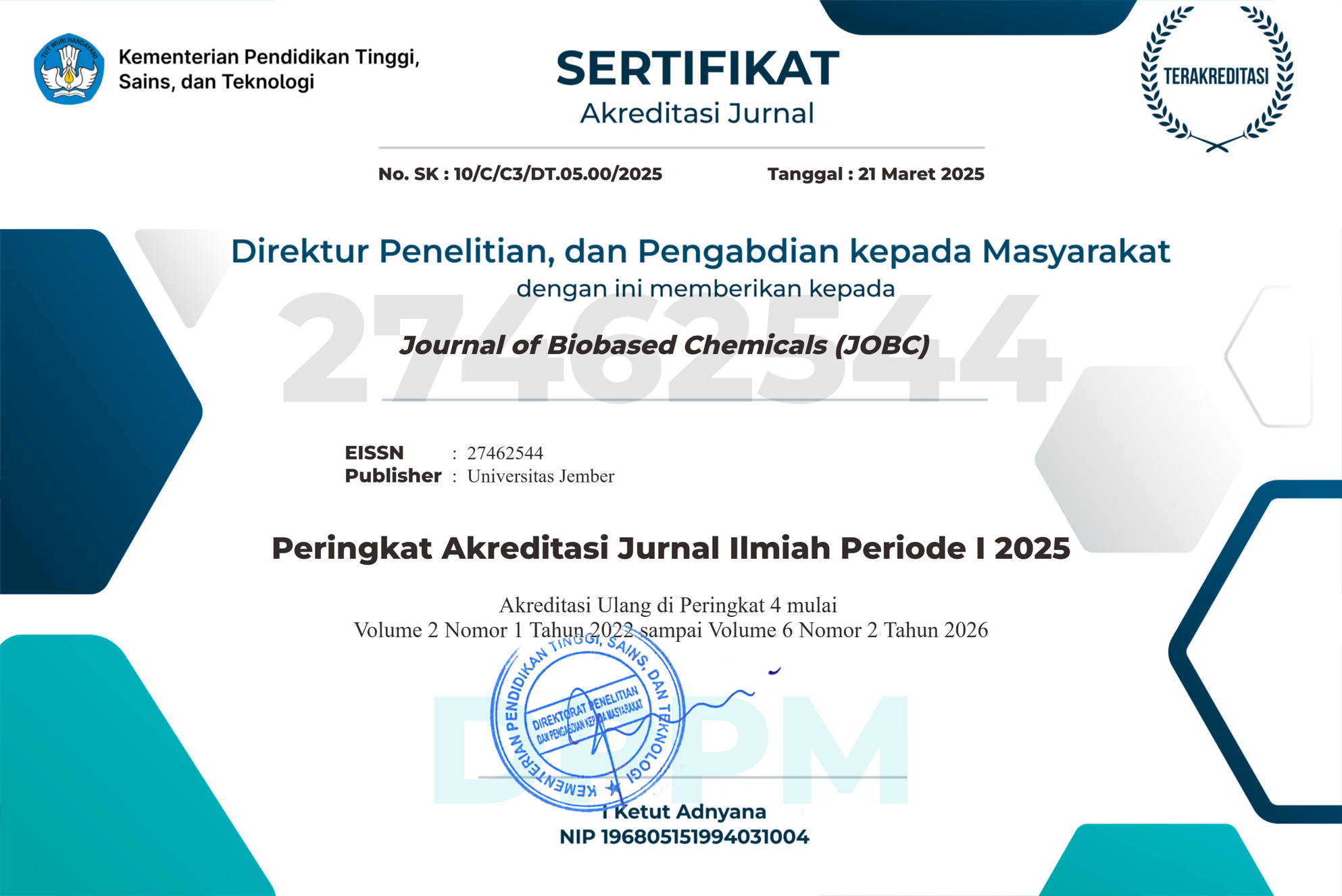Optimization of Total Phenolic Content Analysis of Chayote (Sechium edule) using Ultrasonic-Assisted Extraction and Response Surface Methodology
DOI:
https://doi.org/10.19184/jobc.v3i1.276Keywords:
chayote (Sechium edule), ultrasonic-assisted extraction, total phenolic content, antioxidant activity, response surface methodologyAbstract
Chayote (Sechium edule) is a plant from the Cucurbitaceae family that contains several vitamins such as vitamins A, B, and C, and is often used for medicinal purposes. Based on phytochemical analysis, chayote extract contains bioactive compounds in the form of phenolics. Phenolic compounds are secondary metabolites and are used as cosmetic and medicinal ingredients due to their ability to reduce oxidative stress. This research aims to determine the total phenolic content and antioxidant activity of chayote (Sechium edule) extract using UV-Vis spectrophotometry. Chayote extract was obtained using the Ultrasonic Assisted-Extraction (UAE) method with 96% ethanol solvent. The extraction variables used were time (15, 20, and 25 minutes), amplitude (45, 65, and 85%), and solvent ratio (1:5, 1:10, and 1:15). The determination of total phenolic content was based on the Folin-Ciocalteau method, while antioxidant activity was determined using DPPH. The determination of chayote extraction parameters for total phenolic content was carried out using the Response Surface Methodology with a Box-Behnken type. The optimal conditions obtained for chayote extraction were 1.327 mg GAE/g sample for total phenolic content and 29.45% for antioxidant activity under the conditions of 20 minutes extraction time, 65% amplitude, and 1:10 solvent ratio.








